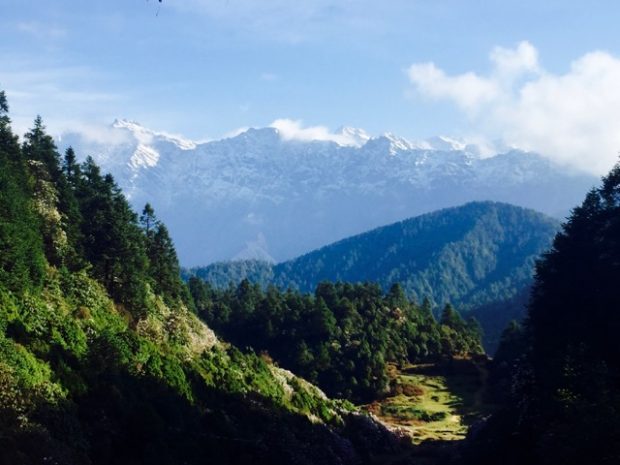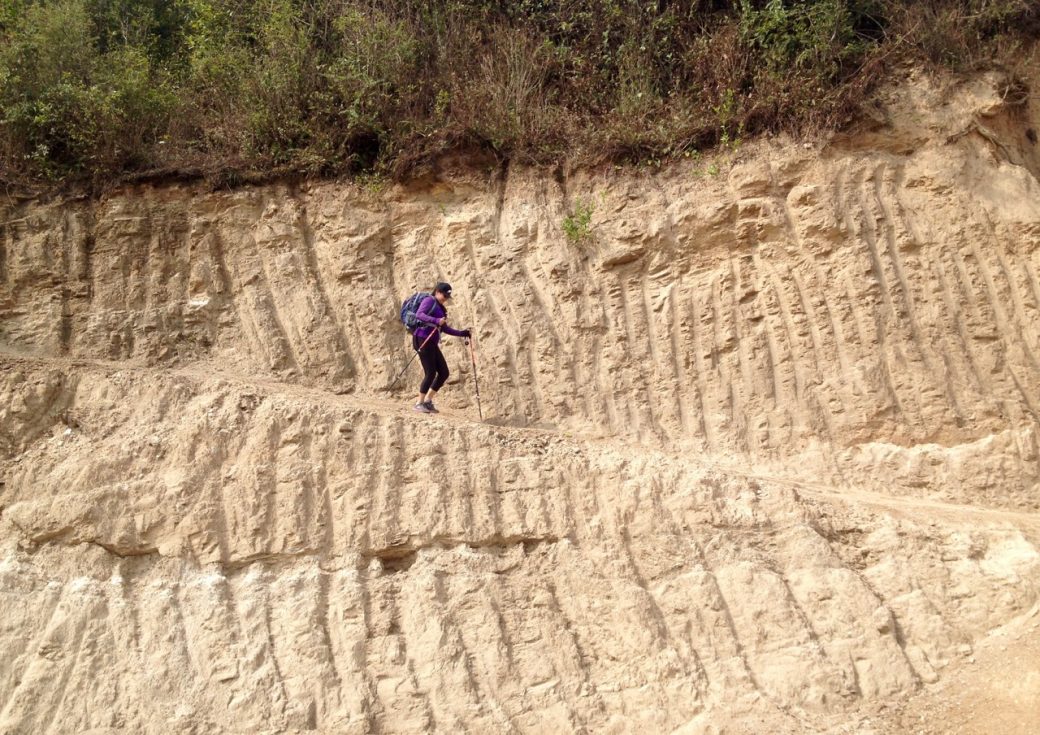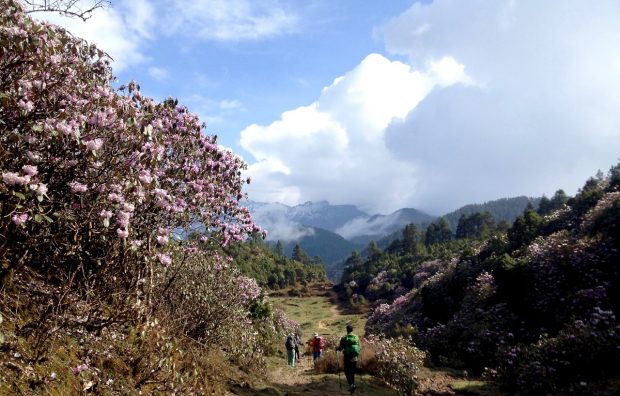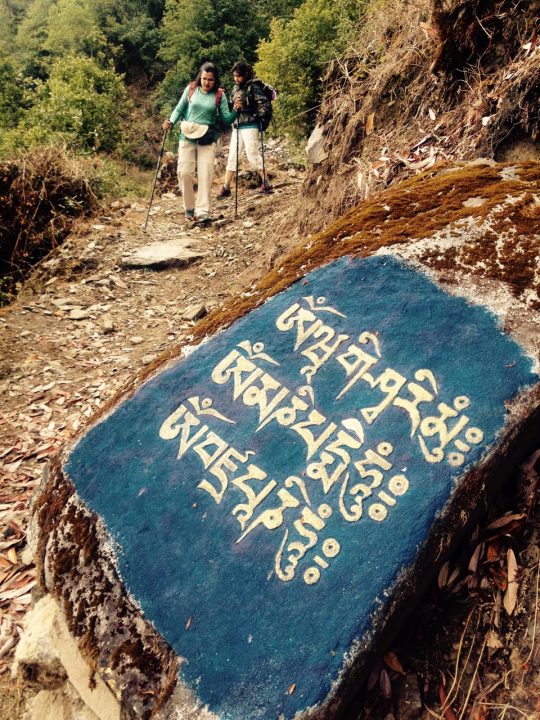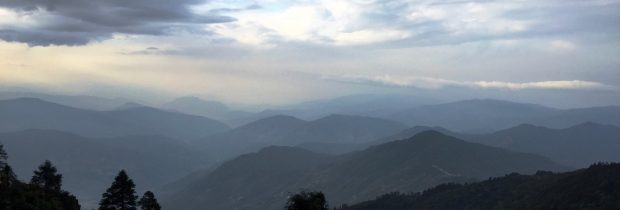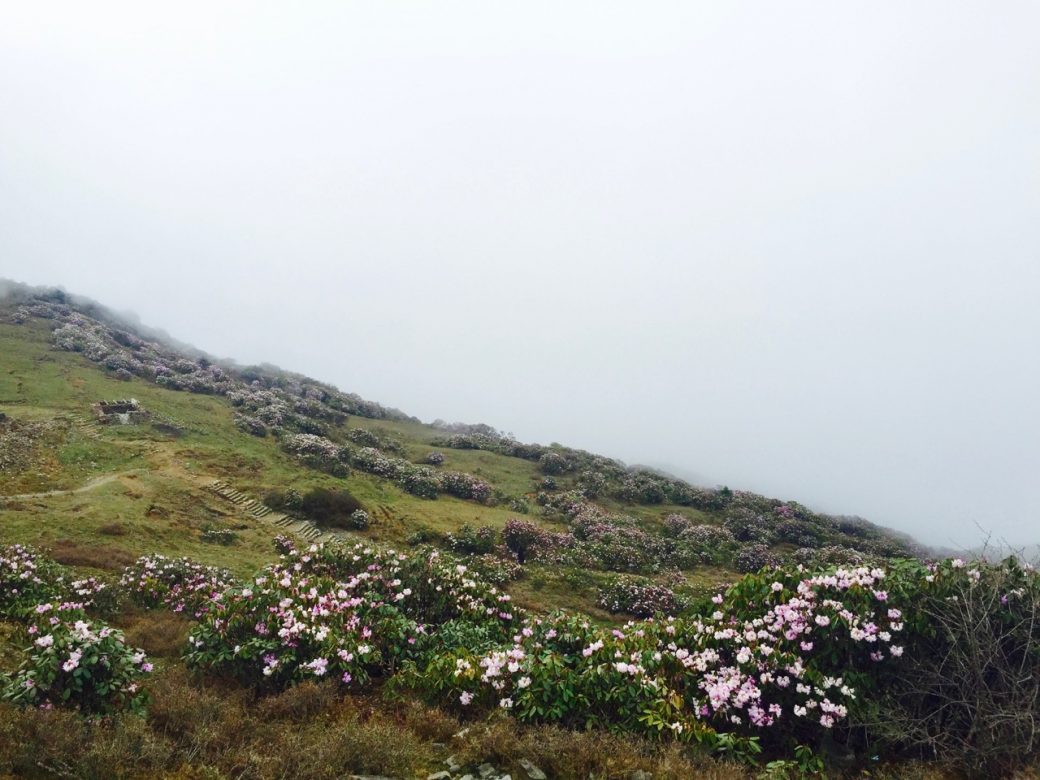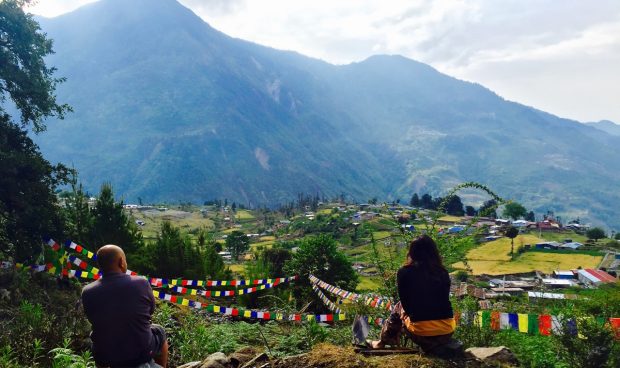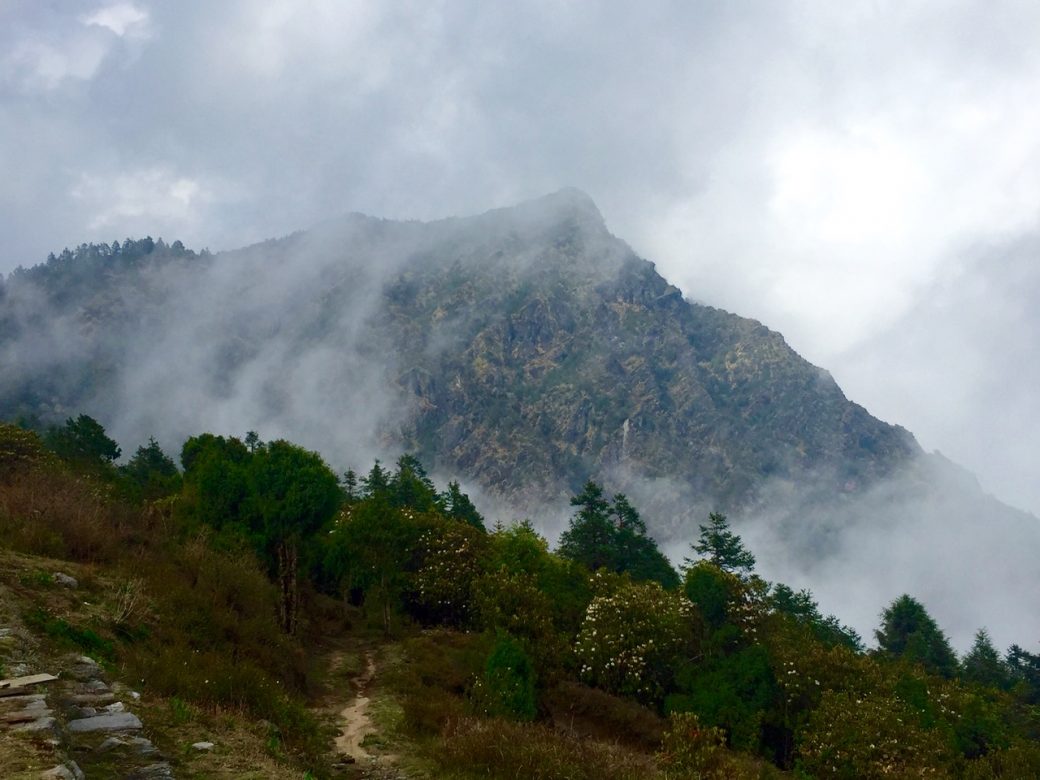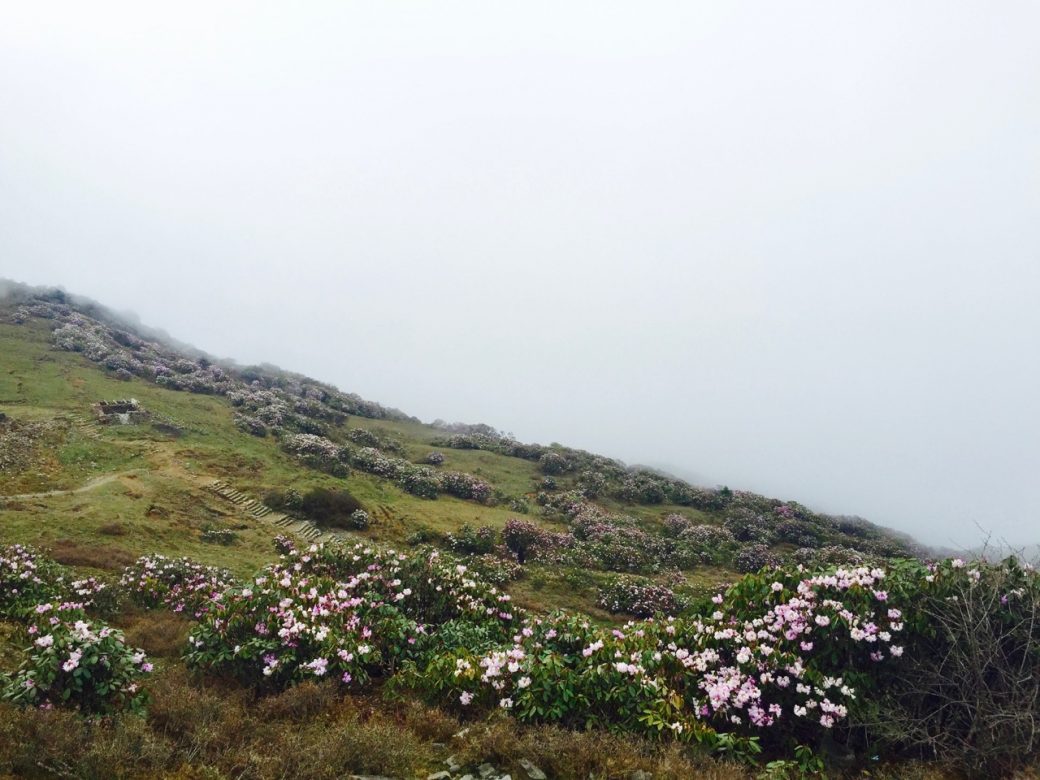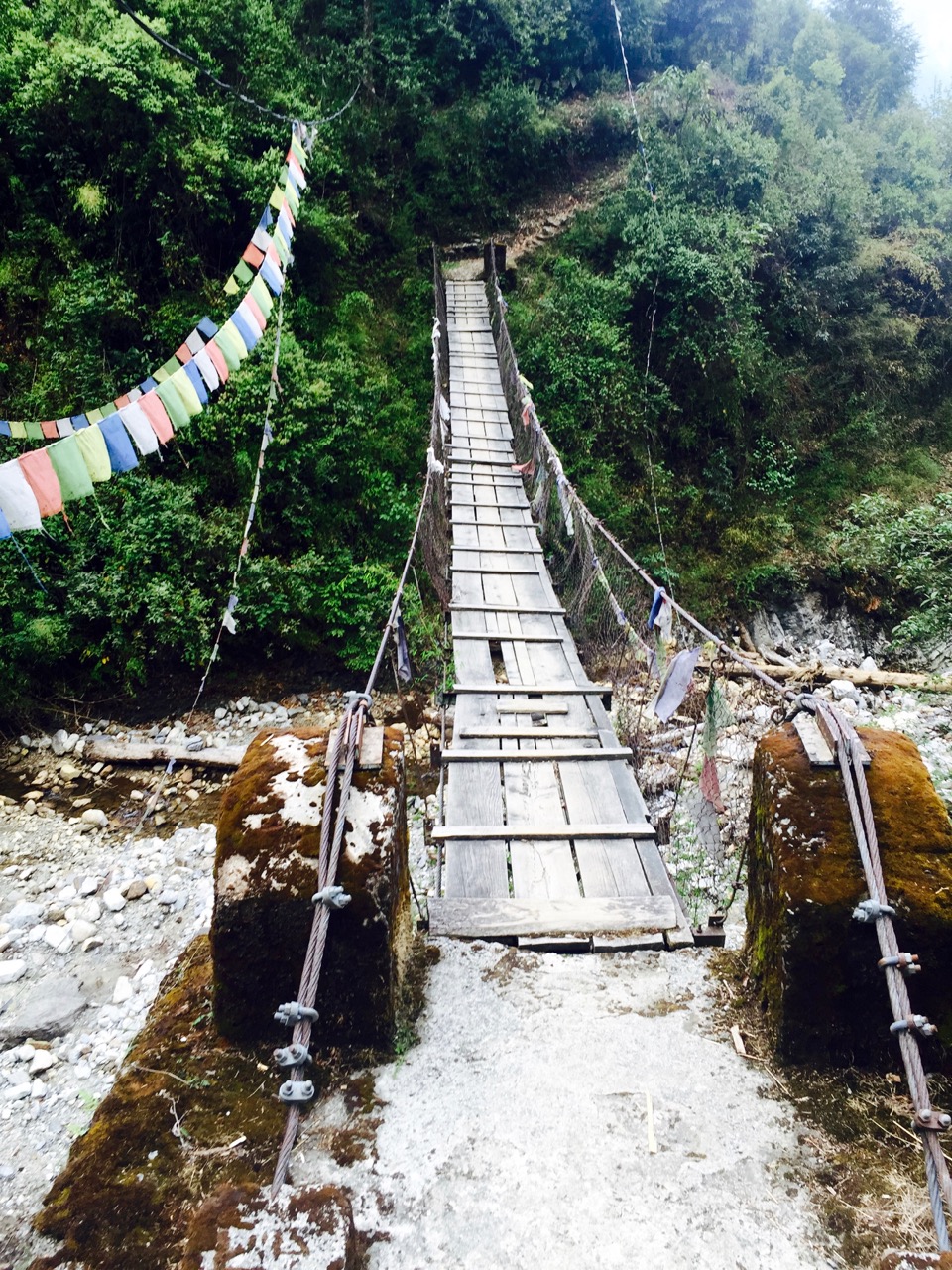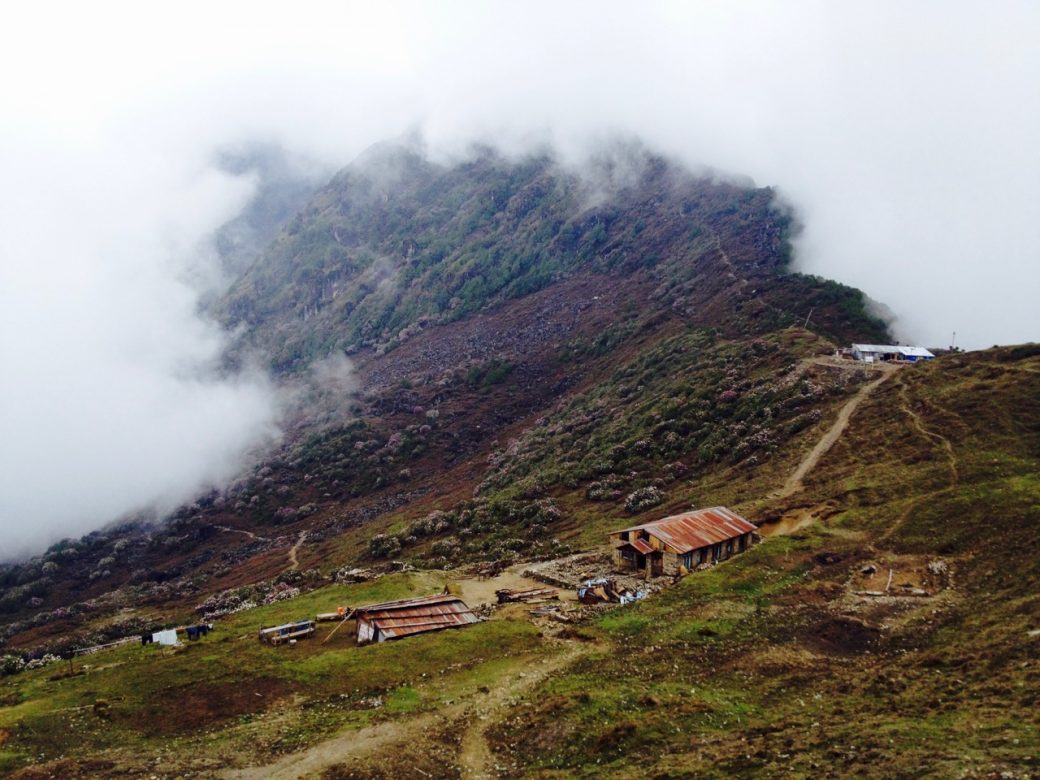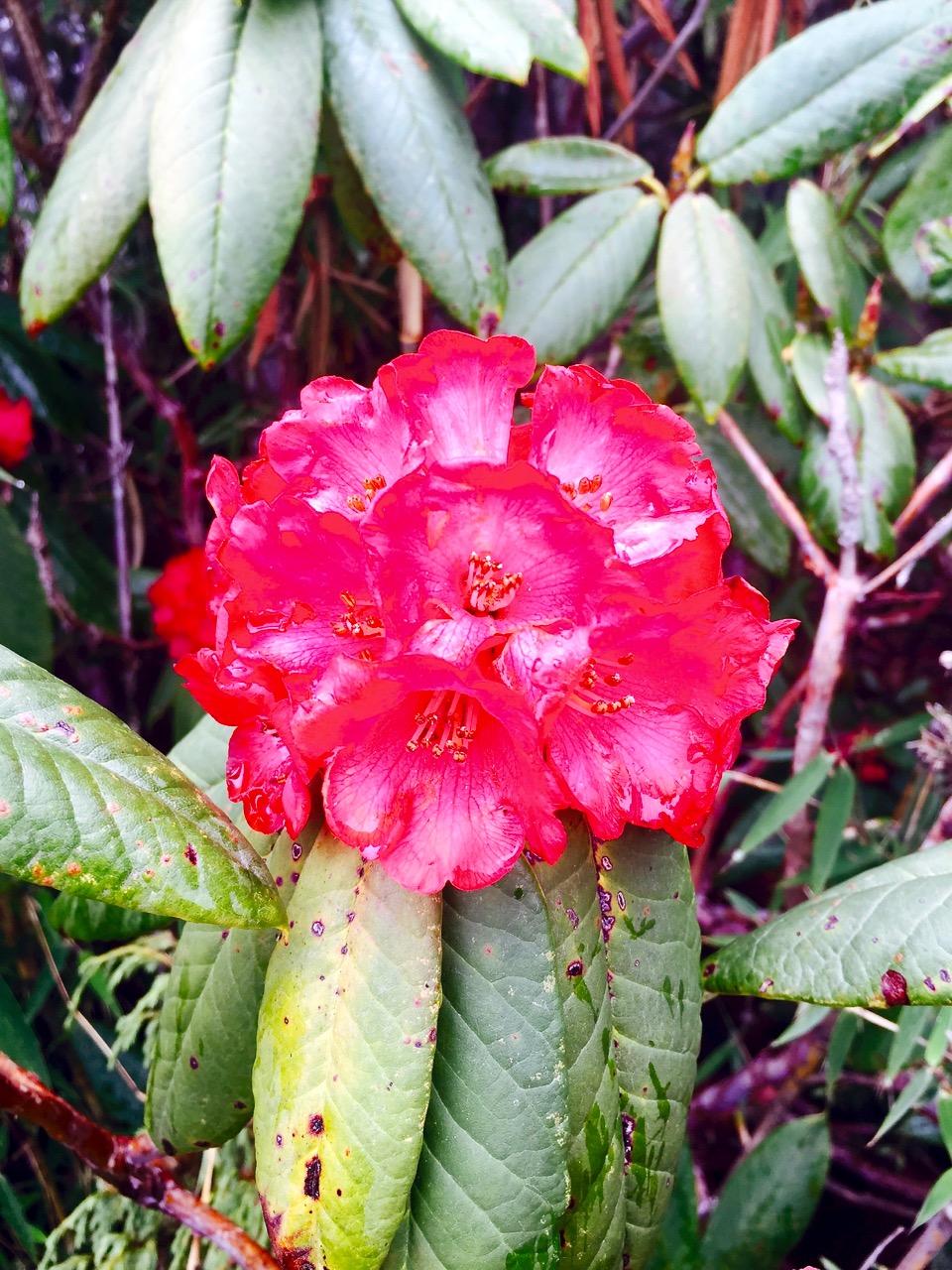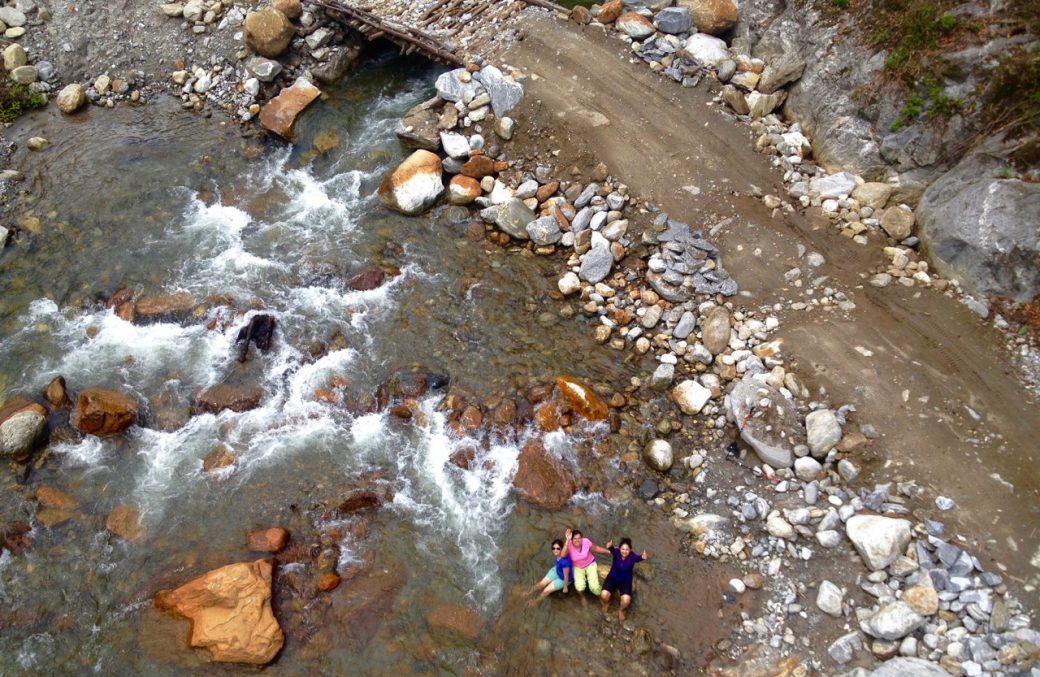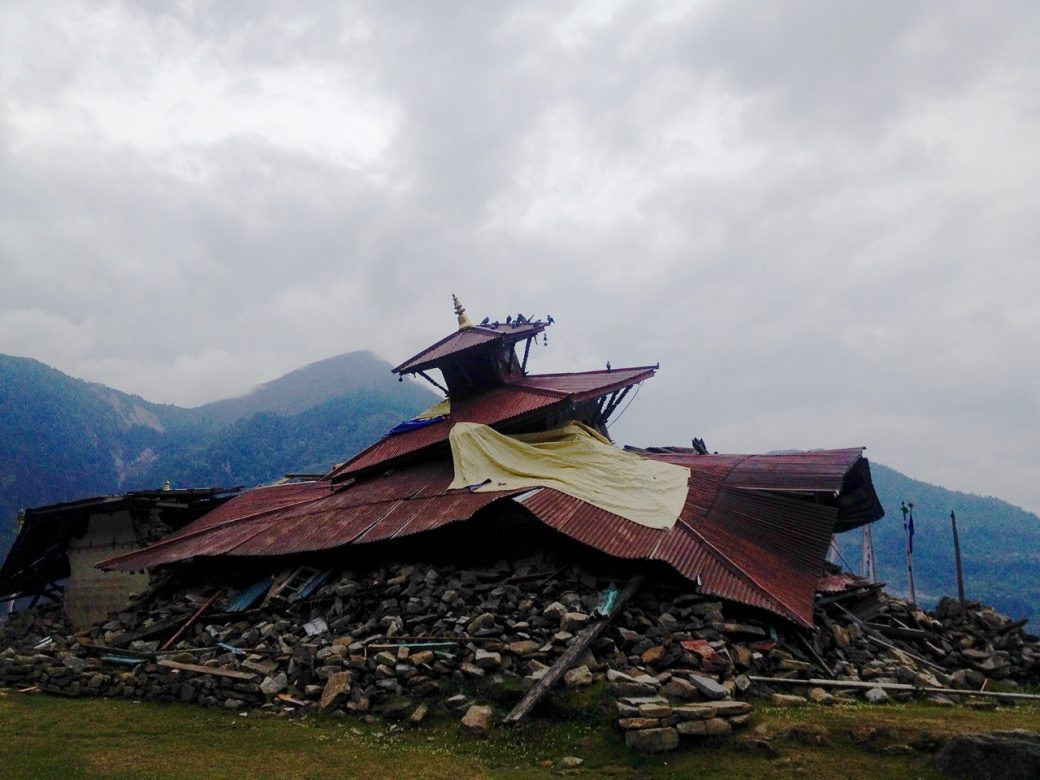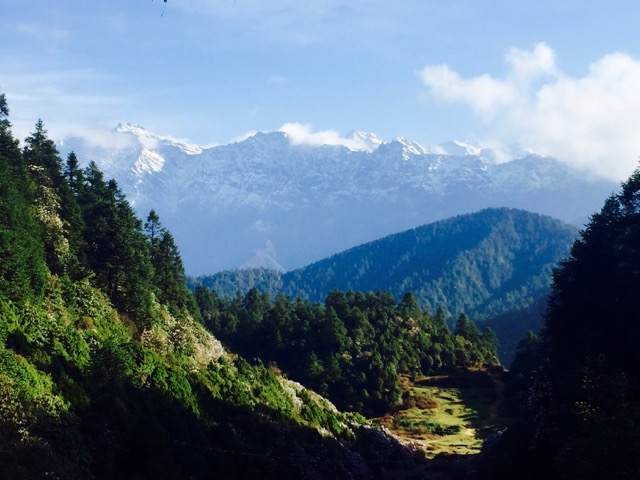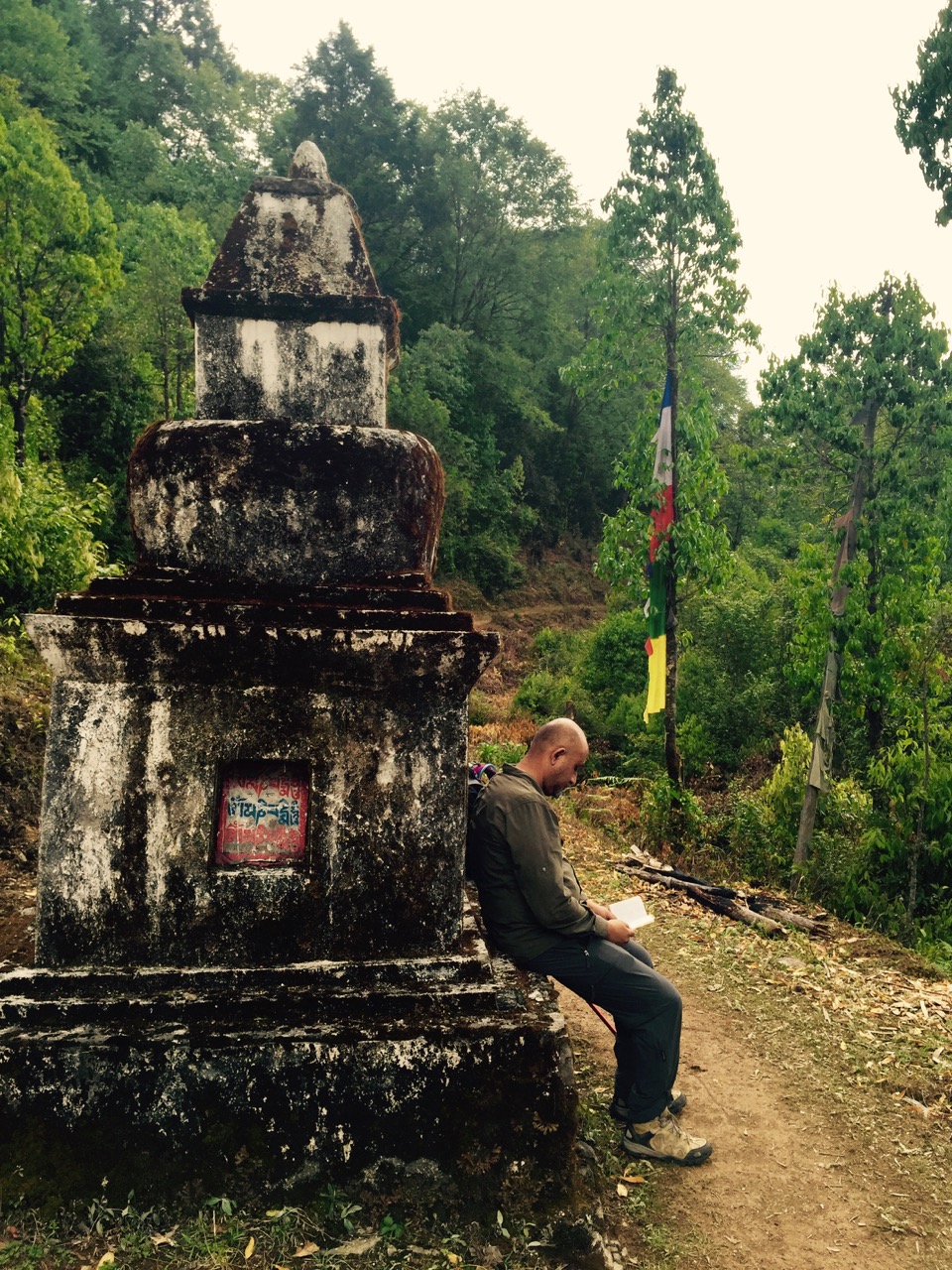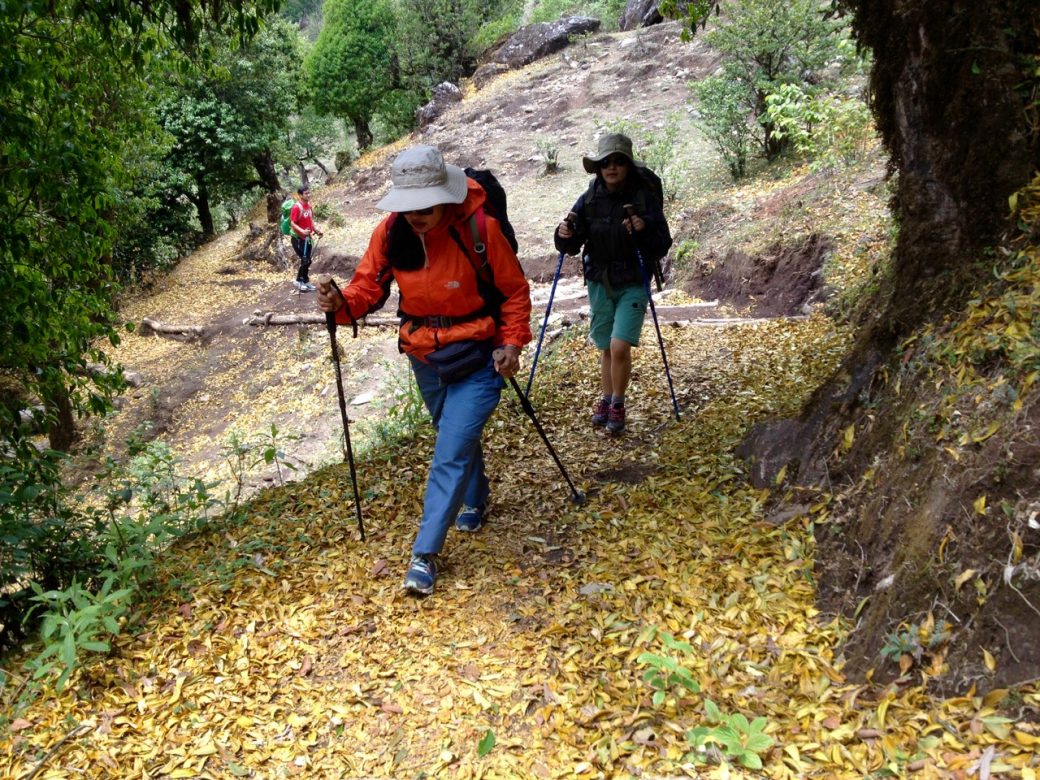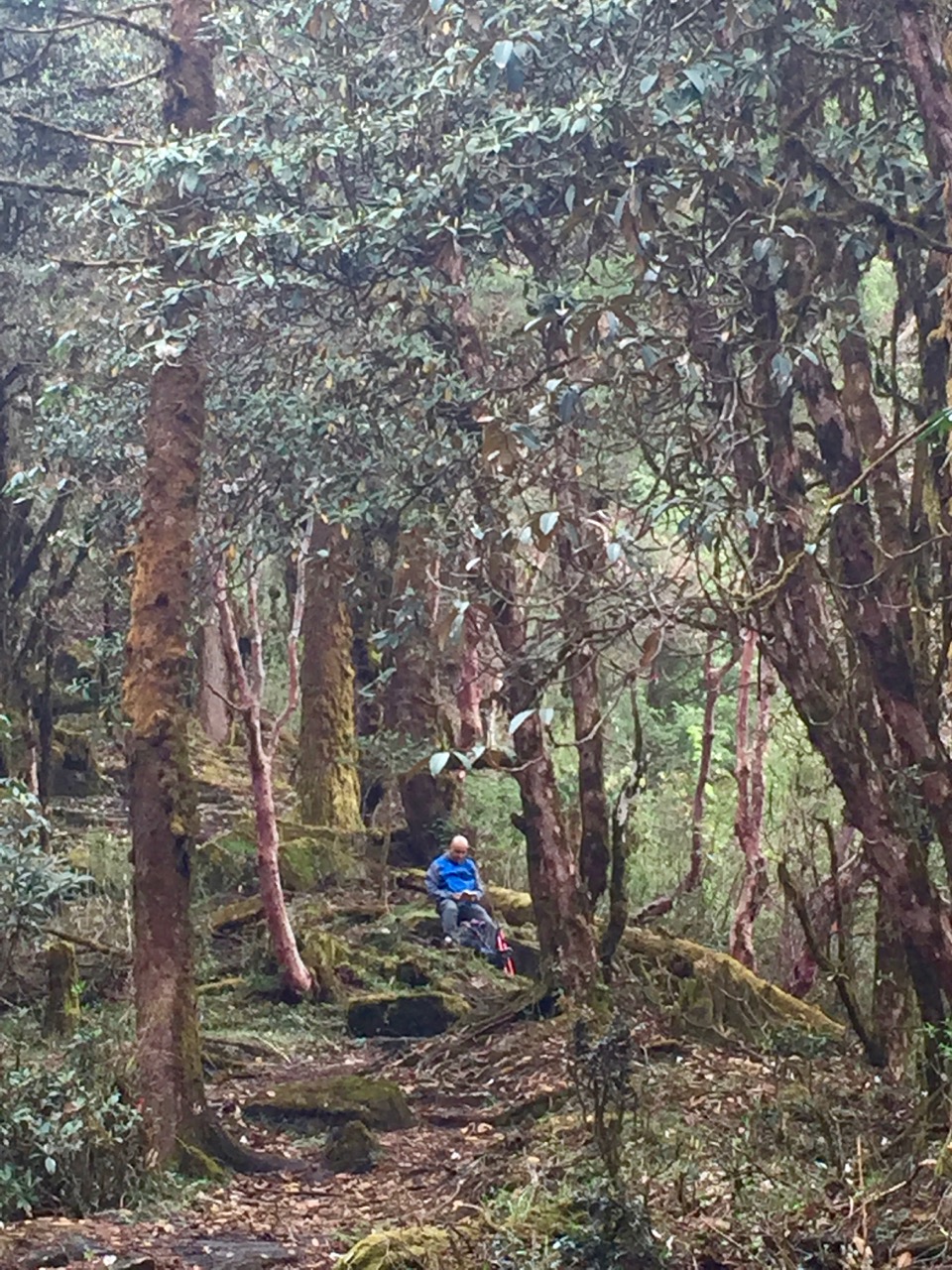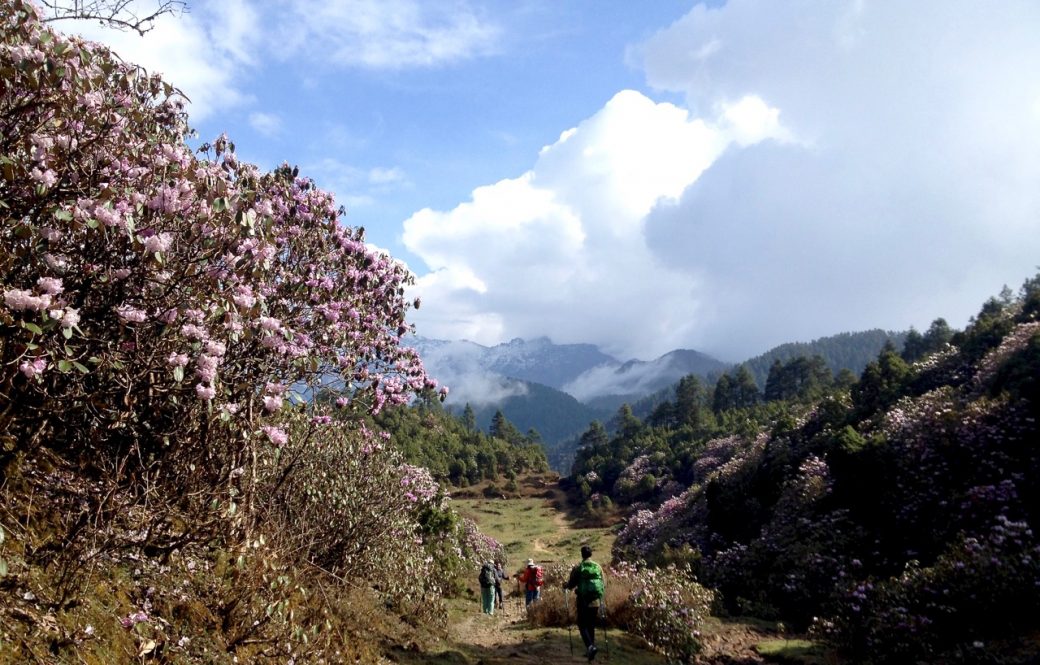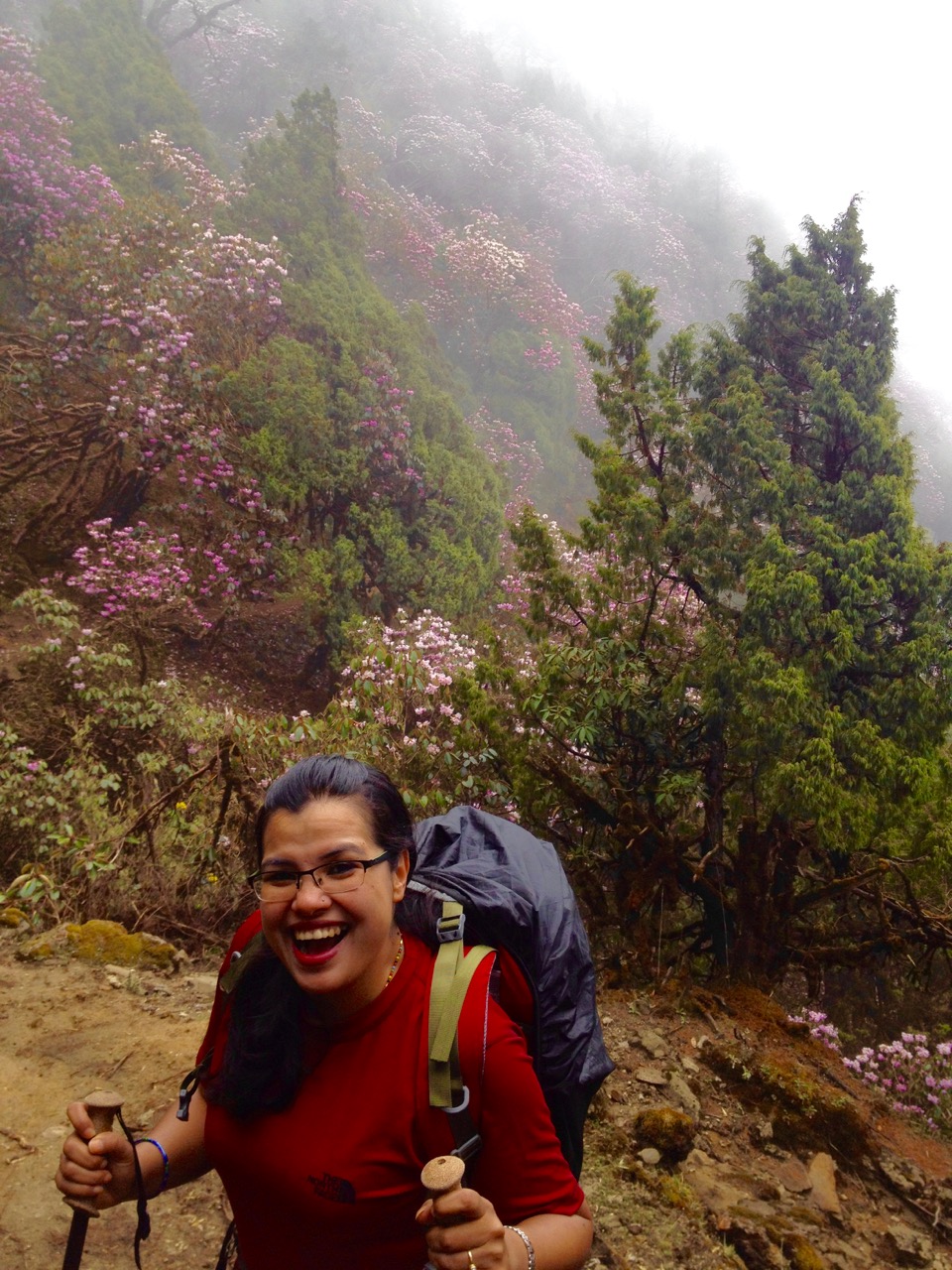So close, yet so far! Helambu region just north of Kathmandu is home of the Hyolmo Sherpa community that very few Nepalis have traveled to. Every year, me and my family, try to trek to one of the remotest regions of Nepal to enjoy and learn more about our nation with its bountiful diversity. This time, we chose the beautiful Helambu region.
“Travel is fatal to prejudice, bigotry, and narrow-mindedness.”
– Mark Twain
Day 1: Sundarijal in Kathmandu (1300 m) to Chisapani (2154 m)
We took a taxi (cab) to Sundarijal through Chabahil- Boudha and started our big climb up stairs just besides Sundarijal hydro (built in 1934 AD). Our climb took us to Mulkharka village inside Shivapuri National Park. We climbed in steps like paths until the very top of Shivapuri hill (we term 2000 meter mountains actually hills in Nepal). As we descended on to the other side towards Chisapani, rain started pouring. As we reached our hotel hailstorm started pouring and we considered ourselves lucky to have avoided that. We had Dal-bhat for dinner and mingled with few travelers returning from Gosaikunda-Langtang region to get info on the route and places of notice beyond.
Day 2: Chisapani (2134m) to Chipling to Gol Bhanjgyang (2150m)
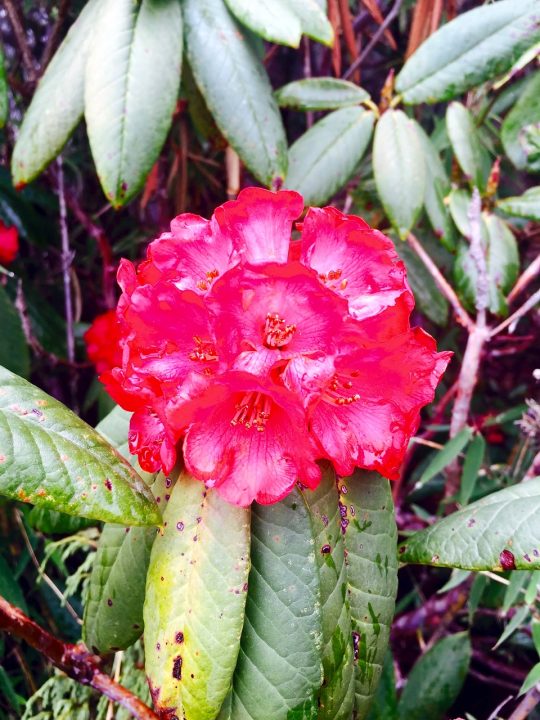 We started our day with tea and Tibetan bread (basically a distinct deep-fried wheat flour) for breakfast. Then we started our way down to Pati Bhanjyang. We passed by many demolished houses by the earthquake and made our way through Thaakune Bhanjyang after which we started another tough climb towards Chipling. At chipling we had lunch at hotel where a religious rite was going on. The local Tamang community was all there, merry with “Chhang” (local wine) enjoying the festivities with local horns and drums beating while others were chanting buddhist sacred texts.
We started our day with tea and Tibetan bread (basically a distinct deep-fried wheat flour) for breakfast. Then we started our way down to Pati Bhanjyang. We passed by many demolished houses by the earthquake and made our way through Thaakune Bhanjyang after which we started another tough climb towards Chipling. At chipling we had lunch at hotel where a religious rite was going on. The local Tamang community was all there, merry with “Chhang” (local wine) enjoying the festivities with local horns and drums beating while others were chanting buddhist sacred texts.
At around midday we headed up towards Gol Bhanjyang when rain started pouring in dearly. It rained so hard (Nepal was going through a tough dry season so this was welcome for everyone except us travelers). So we had to rest at a hotel there. After the rain we chanced upon the magnificent Himalayas for a brief glance. I had a local delicacy “Sherpa soup” or “Thenthuk” for dinner.
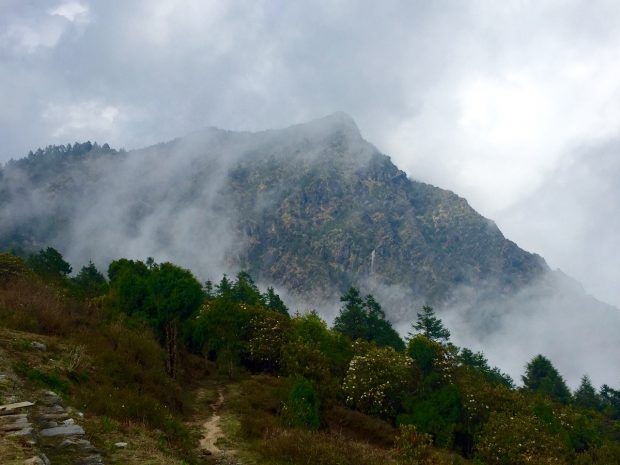
“I took a walk in the woods and came back taller than the trees…
-Henry Thoreau
Day 3: Gol Bhanjyang (2150 m) to Kutumsang (2450m) to Sano Ghopte to Mangen goth (3285 m)
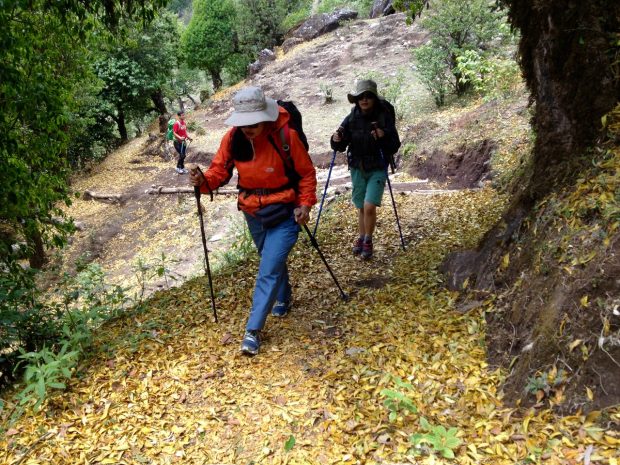 We started our walk on a cloudy day. We slowly climbed up to a ridge above Kutumsang a small Sherpa village bordering the districts of Nuwakot and Sindhupalchowk. In about 2 hours we reached Kutumsang where we had a quick lunch. All the hotels there were demolished in the earthquake but reconstruction was going on. I am sure the charm of being in Kutumsang will return soon. As we made our way past the army checkpoint we walked up to Sano Ghopte and we could feel the altitude wearing us down as we neared Mangen goth at 3285.
We started our walk on a cloudy day. We slowly climbed up to a ridge above Kutumsang a small Sherpa village bordering the districts of Nuwakot and Sindhupalchowk. In about 2 hours we reached Kutumsang where we had a quick lunch. All the hotels there were demolished in the earthquake but reconstruction was going on. I am sure the charm of being in Kutumsang will return soon. As we made our way past the army checkpoint we walked up to Sano Ghopte and we could feel the altitude wearing us down as we neared Mangen goth at 3285.
At Mangen goth, we stayed the newly reconstructed “Greenview Hotel” (after the earthquake of 2015). It was cold up there yet the views of rhododendrons of various colors from pink to red to white enthralled us. For dinner we had our usual “dal bhat power, 24 hour power.” It rained over the night, a welcome respite from the dry spell in the previous months.
Day 4: Manen goth (3285 m) to Tharepati (3660 m) to Melamchi gaun (2550 m)
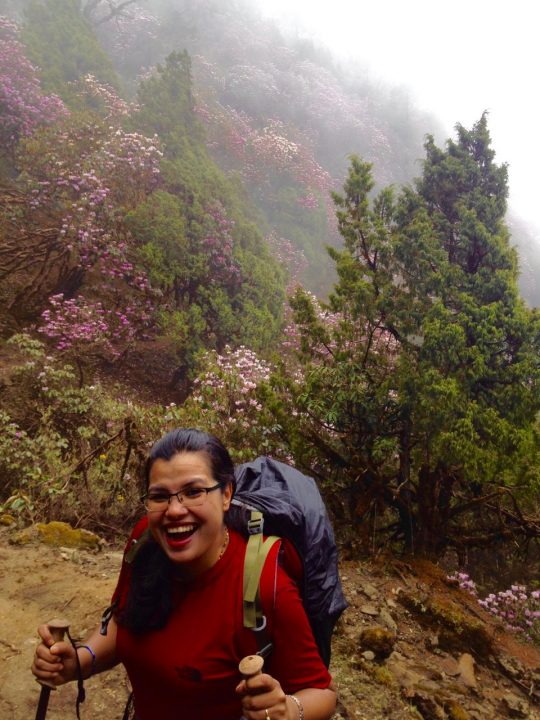 We started our morning through the majestic rhododendron filled forests as we climbed the ridge to view the Gosainkunda and langtang ranges. We were dazzled by the superb display of rhododendrons across every step of our journey to Tharepati. With clouds below us and mists rising around us constantly, we felt ‘lucky’ to be in a serene walk ‘on’ the clouds. With pristine, quietness punctured only by birds making their music, the walk was for me more of a meditation. This misty walk was filled with pink to red to white rhododendron flowers all along. Even the fallen leaves on our paths had turned bright yellow from the rains in the earlier days. As we climbed up into the higher 3000 meters, we could feel the need to breathe faster. We slowly made it out to Tharepati (3660m) the highest point of our Helambu trek. Breathing at Tharepati meant only 65% of the oxygen was available than at sea level.
We started our morning through the majestic rhododendron filled forests as we climbed the ridge to view the Gosainkunda and langtang ranges. We were dazzled by the superb display of rhododendrons across every step of our journey to Tharepati. With clouds below us and mists rising around us constantly, we felt ‘lucky’ to be in a serene walk ‘on’ the clouds. With pristine, quietness punctured only by birds making their music, the walk was for me more of a meditation. This misty walk was filled with pink to red to white rhododendron flowers all along. Even the fallen leaves on our paths had turned bright yellow from the rains in the earlier days. As we climbed up into the higher 3000 meters, we could feel the need to breathe faster. We slowly made it out to Tharepati (3660m) the highest point of our Helambu trek. Breathing at Tharepati meant only 65% of the oxygen was available than at sea level.
Day 5: Melamchi Gaun (2600 m) to Tarke Ghyang (2560 m)
In the morning we took a nice tour around the spiritual relics of the Melamchi Gaun. The wheat fields were about to be harvested and potato and garlic grew bountiful in the gardens in front of each houses there. We inquired in a local ‘boarding’ school where students from all over Nepal apparently came to study. It was inspiring to see them studying and staying at tents while their school was to be rebuilt. We wished the teachers all the best and then descended upon the famed “Melamchi” river which millions in Kathmandu valley (58 kms) away are still counting upon to get their water supply after 20 long years. We reached the river in about 2 and half hours as some of us were not so well so we all took time going down. At the river we bathed, and enjoyed the cold Himalayan waters from the strong summer sun.
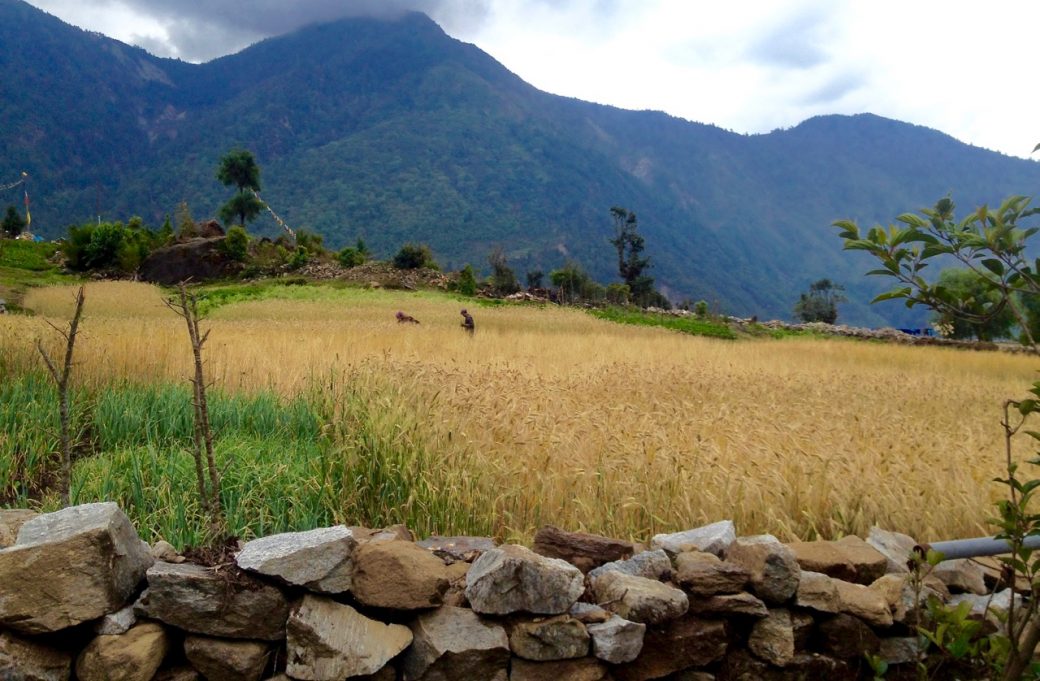
After lunch, we started climbing up to Tarke Ghyang, one of the biggest villages in Helambu. Our climb was dotted with “mane”, small buddhist stupas along the way welcoming us every few hundred meters of climb or so. At one point I was startled by a passing deer in the forest. We reached Tarke Ghyang after 7 hours to to find a tightly packed village (much of it destroyed by the earthquake).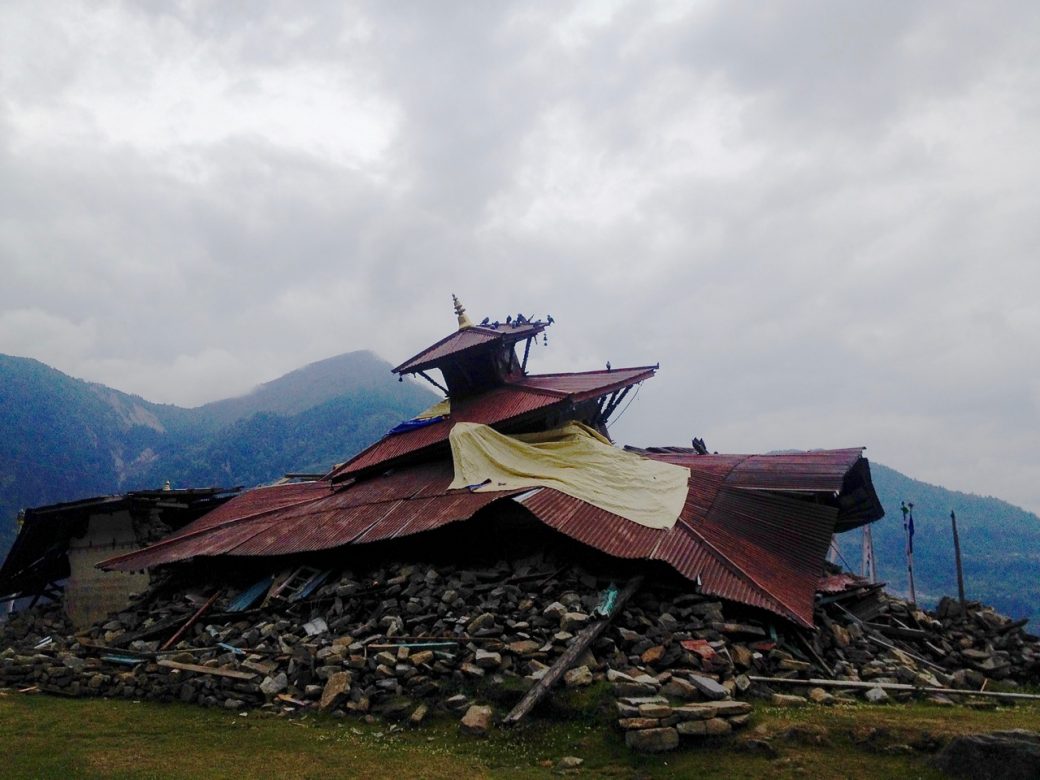
We stayed a homestay with a wonderful Sherpa family who had 4 daughters and two sons. It seems every family in these villages had someone working somewhere out of Nepal. Our host-family also had two daughters working outside Nepal. I long for the day when all these bright young people can come back and lead their families, their culture and their societies. The Helambu villages was much warmer compared to the nights at Gol Bhanjyang and Manen goth.
Day 6: Tarke gyang (2600 m) to Ghyangul to Shermanthang (2610 m)
We set out to Shermanthang another big Hyolmo Sherpa village at around 9:30 am. It was a pleasant walk with no uphill and downhill which had plagued us in the earlier days along forests dotted with “stupas” and buddhist scriptures sculpted on stones. We had lunch at Ghyangul village located halfway through (about 2 hours from Tarke gyang). The owner had lost three members of his family at the earthquake yet was quietly busy rebuilding a nice small lodge.
We reached Shermanthang around two in the afternoon where we stayed at another homestay who had two rooms for travelers. Phurpa Sherpa and his family were a lively bunch and it was nice to see grandparents, parents and children all together! Among the Helambu villages, Sherman Thang most probably has great panoramic views of the himalayas and its worth spending the mornings and evenings viewing the mountains as the sun rises and sets.
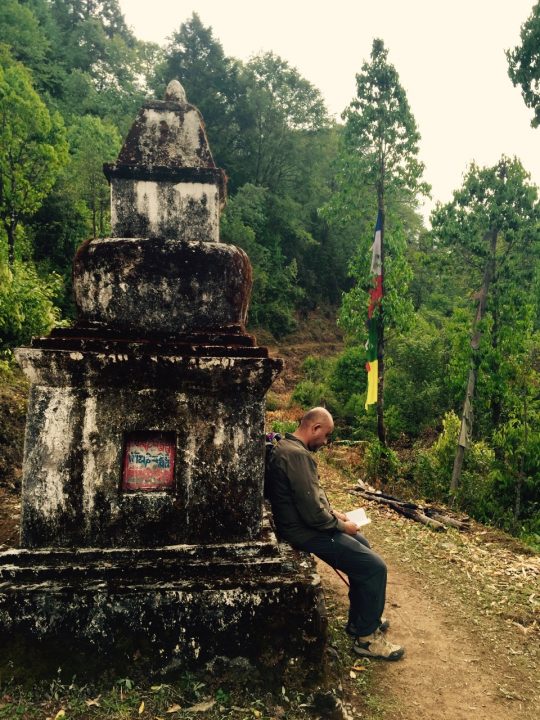
Day 7: Shermanthang (2610 m) to Dhubi Chowr to Melamchi Pul bazaar (830 m)
Our last day began with a superb display of the mountains in the north as if it opened up to give a fine farewell as we walked down at around 7:30 in the morning on a long walk down to meet the modern world with the modern amenities. After an hour or two, it becomes a race to the bottom to meet the place through which you can go back to Kathmandu.
After 6 long hours of hard walk we reached Melamchi pul bazaar where two rivers, Melamchi and Indrawati converged. We took time to briefly soak our legs in water. I recommend pre-booking or getting a private vehicle if you want to bask in the satisfaction of the wonderful previous week at the Helambu region. The reason being the atrocious way syndicate bus systems cramp passengers like herds of animals making any traveler lose all serenity and positiveness s/he had accumulated over the trek. We finally reached Kathmandu where our eyes were shocked at so many bright lights on the streets in the night. For a whole week we had become so used to the darkness with such lights only up on the sky.
In essence, our Helambu trekking trip was a visual delight of colors of nature not just the himalayas that travelers usually seek. During late spring, forests come alive with rhododendrons of various colors. White mists regularly rose upon the colorful forests to literally take our breath away. Add to this, the warm hospitality and humbleness of local “hyolmo” Sherpa community despite suffering through the terrible earthquake, made our hearts warmer and minds calmer. For me the long walk across a trail with buddhist relics sprawled, for many hours a day, became more of a spiritual healing. And all along, I couldn’t help contemplate:
“Nepal is beautiful. It doesn’t need to change. We do.
– Ujwal Thapa
If you want to travel to these regions, I recommend trying with Outlandish Adventure Nepal Pvt.Ltd company whom I traveled with.
Please read more of my Nepal travel diaries here.
